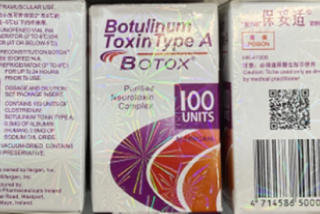Botox: beyond cosmetic fixes
At one time, most of us knew about botulinum toxin mainly as the source of deadly botulism food poisoning. Produced by the bacterium Clostridium botulinum, the toxin is one of the most lethal substances on earth. Ingested, it can paralyze muscles throughout the body, including those that control breathing. Yet on a smaller scale, the same mechanism can do a body good. Injected into muscle tissue, for example, botulinum toxin can ease debilitating spasms and pain.
The Many Faces of Botox
Today, most of us are familiar with botulinum toxin as Botox, the popular cosmetic treatment approved in 2002 to minimize the appearance of glabellar lines -- vertical furrows between the eyebrows that become more pronounced as we age. By preventing muscle contractions that cause facial lines, Botox smooths the skin and makes it look younger. It’s now widely used to treat a range of facial wrinkles, including those that appear on the neck (turkey neck), at the corners of the eyes (crow’s feet), and across the forehead.
Botox gets the headlines these days as a wrinkle reducer, but it has a longer history as a medical therapy. In the late 1950s, researchers showed that injecting tiny amounts of botulinum toxin relaxed overactive muscles by blocking the release of acetylcholine, a neurochemical essential for muscle contraction.
In 1989, Botox was approved for the treatment of strabismus (misaligned eyes) and blepharospasm (abnormal squinting and eyelid twitching). Since then, it’s been approved for the treatment of cervical dystonia (muscle spasm affecting the neck and shoulders) and hyperhidrosis (severe sweating). Myobloc, which is made from botulinum toxin strain type B (Botox is made from the type A strain), is also approved for the treatment of cervical dystonia. Dysport (another form of botulinum toxin type A) came on the market in 2009 and is approved for both cervical dystonia and glabellar lines.
Botox and its cousins have the official go-ahead for just a few medical indications, but once a drug is approved, it can be prescribed at a clinician’s discretion. So the toxin is now being used for a growing list of conditions.
APPROVED USES:
- Strabismus (misaligned eyes)
- Blepharospasm (eyelid twitching)
- Cervical dystonia (neck spasm and pain)
- Hyperhidrosis (excessive sweating)
UNAPPROVED, OFF-LABEL USES:
- Focal dystonias
- Cerebral palsy
- Tremor
- Hypertonia (abnormal increase in muscle tension and reduced ability of a muscle to stretch)
- Post-stroke spasticity
- Drooling
- Excessive salivation
- Rhinitis (runny nose)
- Tension headache
- Migraine headache
- Ringing in the ears (tinnitus)
- Facial tics
- Bruxism (teeth grinding)
- Severe jaw pain
- Temporomandibular joint syndrome
- Trigeminal neuralgia (intense facial pain)
- Dysphonia (difficulty producing sounds)
- Raynaud’s phenomenon
- Achalasia (difficulty swallowing)
- Stuttering
- Tourette’s syndrome tics
- Piriformis syndrome (sciatic nerve compression in the buttocks)
- Facial scars
- Anal fissure
- Constipation
- Pelvic pain
- Low back pain
- Incontinence
- Overactive bladder
- Hair loss
- Phantom limb pain
- Tennis elbow
Whether botulinum toxin is used for cosmetic or medical purposes, its effects are temporary, so repeated injections are part of the therapy. The dose depends, among other things, on your weight, the condition being treated, the preparation used, and the amount of muscle into which it’s injected. With repeat injections, muscles may atrophy and lose some function, an effect that’s reversed when the injections stop.




